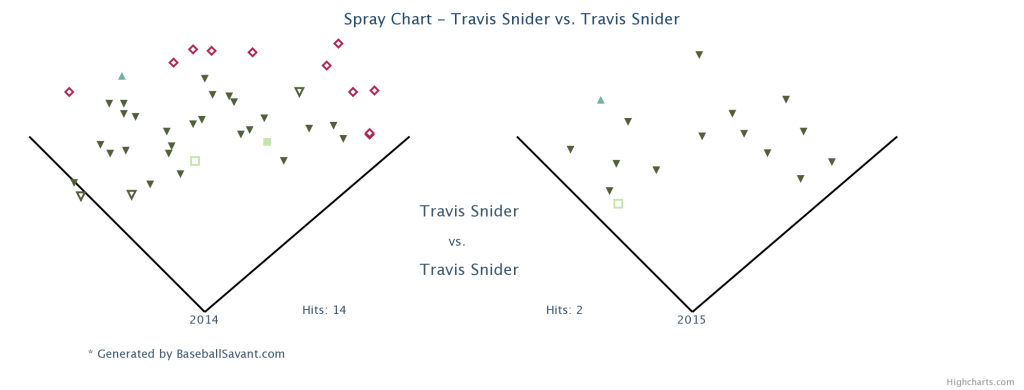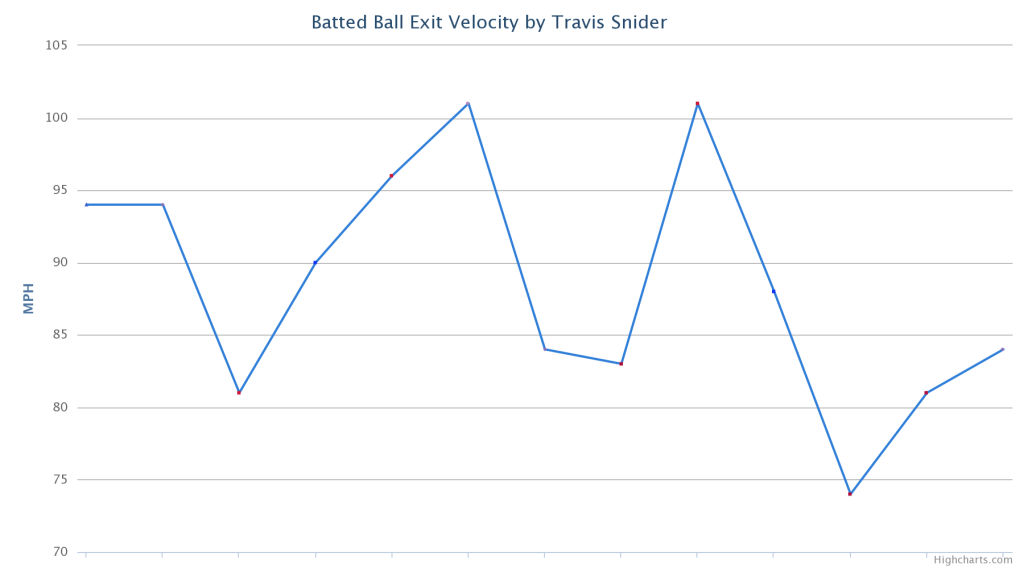Pack Your Lunchbox: Is Snider Next to Go?
With the loss of Nick Markakis during the off-season, the Orioles needed to find another left-handed corner outfield to fill the vacancy. The Orioles were able to acquire Travis Snider from the Pirates for a PTBNL (which turned out to be Steve Brault). The front office spoke highly of the power and defense that he brought to the team. Snider was battling for playing time with Gregory Polanco in the Pirates organization. He no longer had a role on that team, but the Orioles saw benefits from his 2014 season. However so far in 2015, he hasn’t shown the surging offensive numbers and above-average defense that should have made him a great platoon corner outfielder on this team.
One of the major benefits coming off last season was the sudden appearance of power. Travis Snider posted one of the best batted ball distance improvements during the 2014 season. His numbers reflected this change by increasing his career average in terms of HR/FB% from 12.6% to 16.5%. During the 2015 season, his batted ball distance has dropped from 301.6 feet to 285.4 feet. These numbers while disappointing are not surprising based on typical regression where most batters who gain from Year 2 (2014) from Year 1 (2013) often give up about half in Year 3 (2015). Snider fits this model accurately:
- 2013: 273.1 Feet
- 2014: 301.6 Feet
- 2015: 285.4 Feet
However, these numbers have not correlated well in terms of HR/FB%, which is all the way down to 3.6% this year. Spray chart comparisons of his flyballs hit from 2014 to 2015 confirm this and shows that the majority of flyballs he is pulling are no longer going for home runs.
The biggest issue with these flyballs may be a mediocre batted ball velocity in 2015. Only three hits represent above averaged batted ball velocity (94, 96, and 101) and unsurprisingly these represent the only XBHs on flyballs. However, there a lot of flyballs to both sides of the field with mediocre batted ball velocity as can be seen in the following chart:
Following up on this issue, Travis Snider has seen a change in his batted ball profiles from 2014 to 2015. While his LD% is down slightly, the larger issue appears to be with the increase in GB% and reduction in FB%. If Snider was going to succeed as a power hitter at Camden Yards, Snider needed to increase his flyball percentage to use the short distance in RF at Camden Yards to his advantage. Unfortunately, we haven’t seen that at this time.
With Chris Parmelee having an opt-out date of June 15, there has to be some conversation going on within the Orioles organization of whether or not the experiment with Snider is over. Parmelee, also a LH hitter, could serve as another option for the Orioles. He would also represent a much cheaper option than Snider long term as he is under club control until 2019. Parmelee who is posting an .842 OPS and 145 wRC+ is in AAA Norfolk will likely regress. However, he could serve as the Orioles second try to replace Nick Markakis as their LH corner outfielder for the 2015 season.




